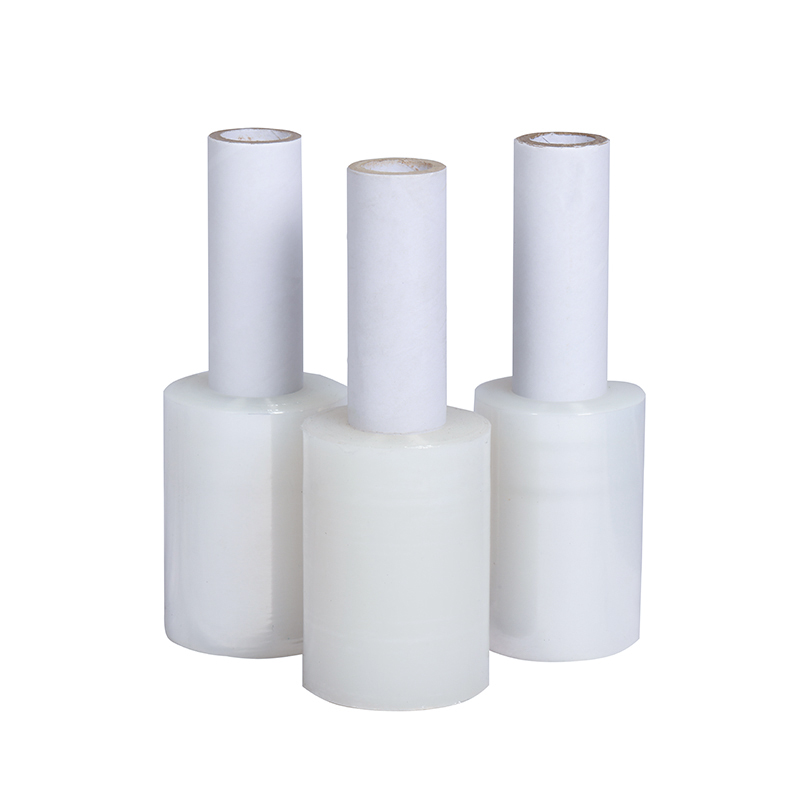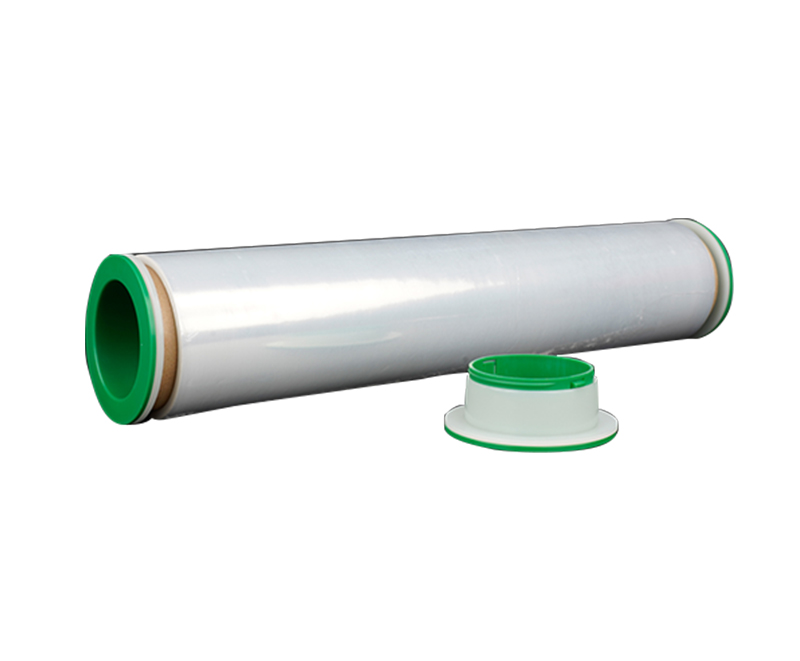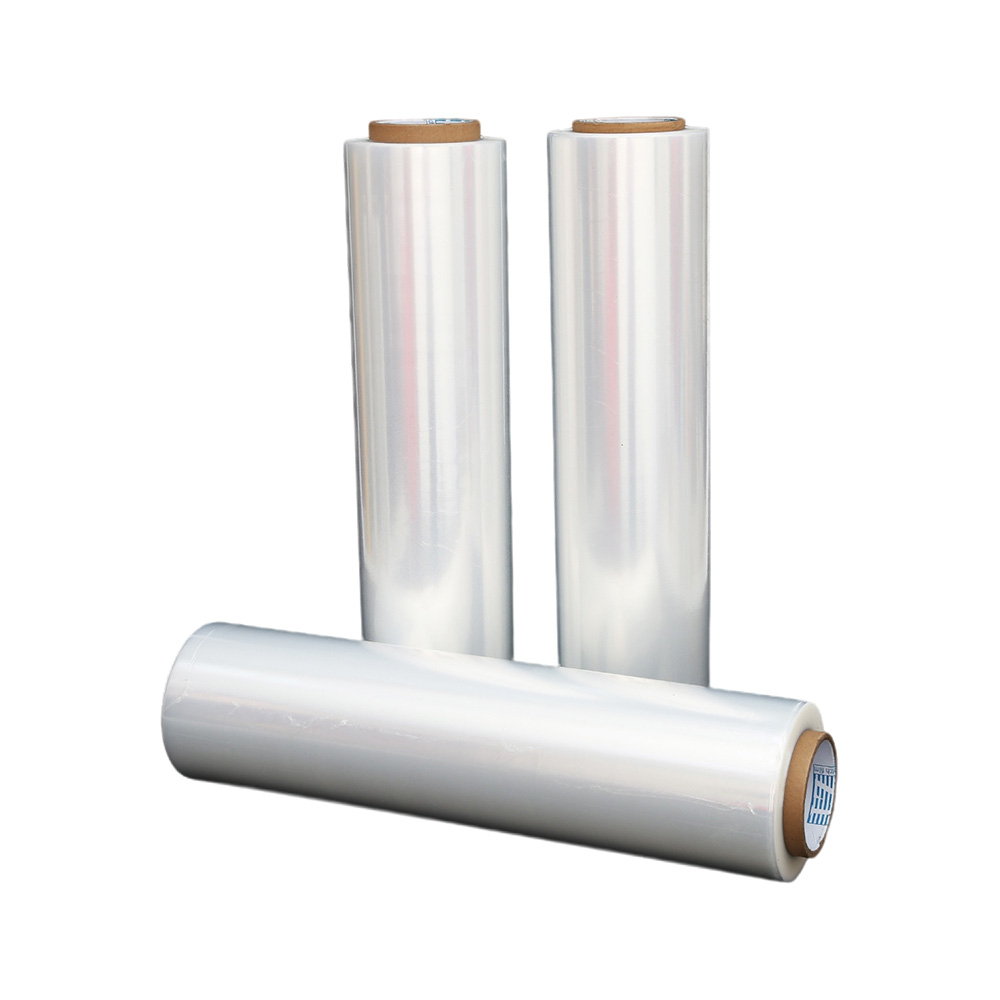PVC vs Polyolefin vs Polyethylene Shrink Films
Source:PVC vs Polyolefin vs Polyethylene Shrink FilmsTime:2025-03-31Visitors:
Shrink films are a packaging powerhouse, wrapping products tightly when heated to ensure protection, tamper evidence, and a polished look. Whether you’re sealing food, bundling retail goods, or securing industrial pallets, choosing the right shrink film is critical. Three popular options—PVC (polyvinyl chloride), polyolefin, and polyethylene—each offer unique strengths, but their differences can make or break your packaging strategy.
In this guide, we’ll compare PVC, polyolefin, and polyethylene shrink films, diving into their properties, applications, costs, and more. From clarity to eco-friendliness, we’ll help you decide which film suits your needs—whether you’re a retailer, food producer, or logistics manager. Ready to find the perfect shrink wrap? Let’s explore the differences.
● Protection: Shielding goods from dust, moisture, and damage.
● Tamper Evidence: Showing if a package has been opened.
● Aesthetics: Enhancing product appeal with a glossy finish.
● Bundling: Grouping items like bottles or boxes for transport.
The three main types—PVC, polyolefin, and polyethylene—differ in composition, performance, and suitability. Understanding these distinctions, as companies like Dongguan Zhiteng Plastic Product Co., Ltd. with over 23 years of packaging expertise emphasize, ensures you pick the right film for your job.
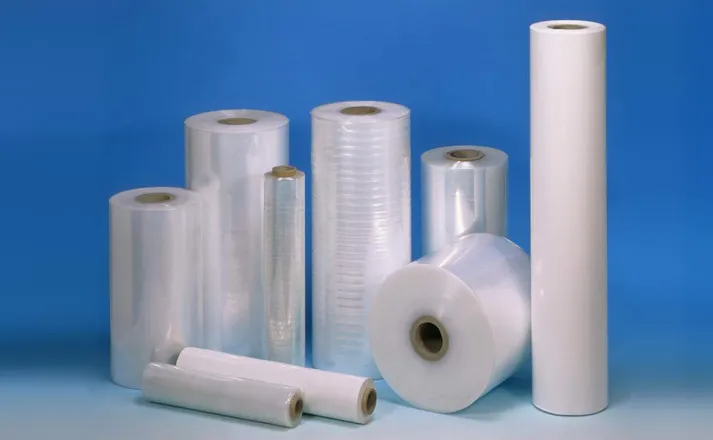
● Affordable: One of the cheapest shrink films.
● Moderate Strength: Suitable for lightweight items but less durable than alternatives.
● Fast Shrink Rate: Contracts quickly at lower temperatures.
● Fumes: Emits odors and chlorine-based fumes when heated, requiring ventilation.
● Non-Food Items: Cosmetics, stationery, or toys where clarity matters.
● Lightweight Products: Items under 5 pounds, like magazines or candles.
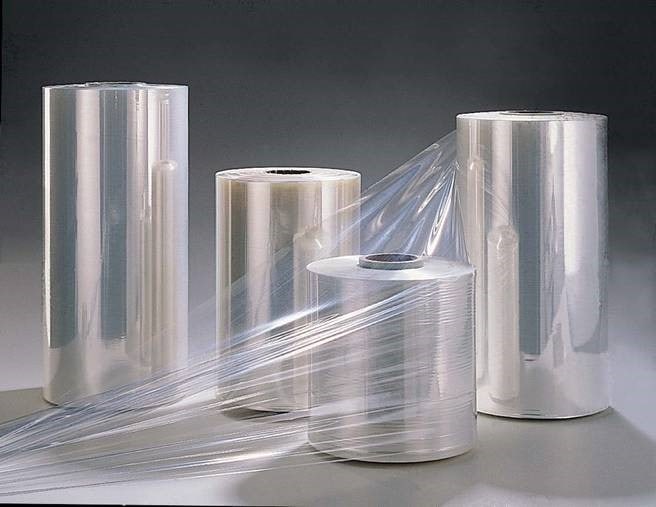
● High Clarity: Nearly as clear as PVC, ideal for retail.
● Versatile: Shrinks evenly across a wide temperature range.
● Strong and Flexible: Balances durability with ease of use.
● Odorless: No harmful fumes when heated, safe for enclosed spaces.
● Retail Products: Electronics, books, or multipacks (e.g., shampoo bundles).
● Sensitive Items: Pharmaceuticals or items needing a clean seal.
● Less Transparent: Hazier than PVC or polyolefin, less ideal for display.
● Cost-Effective for Bulk: Affordable for large-scale applications.
● Slower Shrink Rate: Requires higher heat or longer exposure.
● Flexible Thickness: Available in heavy gauges for industrial use.
● Bundling: Bottled water, canned goods, or lumber.
● Heavy-Duty Protection: Large equipment or outdoor storage.
● Polyolefin: Nearly as clear as PVC, great for food or consumer goods needing visibility.
● Polyethylene: Hazier, less suited for retail but fine for industrial use where looks don’t matter.
● Polyolefin: Strong yet flexible, ideal for multipacks or delicate items.
● PVC: Moderate strength, best for lightweight, non-abrasive products.
● Polyolefin: Shrinks evenly at 250–350°F, forgiving across machines and heat settings.
● Polyethylene: Slower to shrink, often needing 300–400°F, which suits heavy-duty tunnels.
● Polyolefin: Mid-range, $0.10–$0.20 per square foot, reflecting its versatility.
● Polyethylene: Varies widely ($0.08–$0.25 per square foot) based on thickness, cost-effective for bulk.
● PVC: Emits fumes, requiring well-ventilated areas; not food-safe due to chlorine content.
● Polyethylene: Safe for non-food use, no harmful fumes, but not FDA-approved for direct food contact.
● Polyethylene: Widely recyclable, especially LDPE, but thicker films use more plastic.
● PVC: Less eco-friendly due to chlorine; recycling is limited and complex.
Here’s a quick comparison table:
● Small Non-Food Items: Stationery or toys where clarity and low cost are key.
● Temporary Packaging: Lightweight products not requiring long-term durability.
● Retail Products: Electronics, books, or bundled shampoo for clean presentation.
● Sensitive Goods: Pharmaceuticals or medical supplies needing odor-free wrapping.
● Bundling: Grouping heavy items like bottled water or lumber.
● Outdoor Storage: Protecting equipment from weather with thick, durable film.
● PVC:
○ Works with heat guns, L-bar sealers, and shrink tunnels.
○ Needs ventilation to handle fumes (e.g., open warehouse or exhaust fans).
○ Best at lower temperatures (200–300°F) to avoid burning.
● Polyolefin:
○ Highly compatible with most shrink machines, from manual guns to automated tunnels.
○ Forgiving on heat settings (250–350°F), reducing operator error.
○ Example: Dongguan Zhiteng’s polyolefin films suit diverse equipment setups.
● Polyethylene:
○ Requires higher heat (300–400°F) or heavy-duty tunnels for thick films.
○ Best for industrial setups with robust equipment.
○ Manual wrapping possible but slower due to thickness.
Tip: Check your machine’s heat range and film thickness (e.g., 60–200 gauge) to ensure compatibility.
○ Cheapest option, ideal for budget-conscious retailers.
○ High clarity enhances product appeal.
○ Fast shrink rate saves energy.
● Cons:
○ Emits fumes, requiring ventilation.
○ Not food-safe, limiting applications.
○ Less eco-friendly due to chlorine content.
○ Food-safe and odorless, perfect for sensitive products.
○ Versatile for retail, food, and multipacks.
○ Recyclable with strong shrink performance.
● Cons:
○ More expensive than PVC.
○ Slightly less glossy than PVC in some cases.
○ Extremely durable for heavy or sharp loads.
○ Cost-effective for large-scale industrial use.
○ Recyclable and safe for non-food applications.
● Cons:
○ Hazier appearance, unsuitable for retail displays.
○ Slower shrink rate requires more heat or time.
● Polyolefin:
○ Widely recyclable at most facilities.
○ Emerging biodegradable options reduce long-term waste.
○ Thinner gauges (e.g., 60 gauge = 15.24 microns) minimize plastic use.
● Polyethylene:
○ Highly recyclable, especially LDPE, common in recycling streams.
○ Down-gauging (e.g., 100 gauge = 25.4 microns) cuts material without sacrificing strength.
○ Example: Dongguan Zhiteng’s ROHS-compliant films prioritize sustainability.
● PVC:
○ Limited recyclability due to chlorine, often landfilled.
○ Environmental concerns make it less appealing for green businesses.
Tip: Choose polyolefin or polyethylene for recyclability, and work with suppliers offering eco-friendly films to align with consumer values.
● Product Type:
○ Retail display? PVC or polyolefin for clarity.
○ Food? Polyolefin for safety.
○ Heavy industrial? Polyethylene for durability.
● Aesthetics:
○ Need a glossy finish? PVC or polyolefin.
○ Function over form? Polyethylene.
● Budget:
○ Tight margins? PVC.
○ Balanced needs? Polyolefin.
○ Bulk durability? Polyethylene.
● Safety:
○ Food or enclosed spaces? Polyolefin.
○ Non-food with ventilation? PVC or polyethylene.
● Equipment:
○ Low-heat machines? PVC or polyolefin.
○ Heavy-duty tunnels? Polyethylene.
● What’s the thickness range (e.g., 60–200 gauge)?
● Can you provide samples or custom sizes?
Scenario: A bakery needs food-safe shrink wrap for cakes. Polyolefin (80 gauge) offers clarity, safety, and recyclability, making it the best choice over PVC (not food-safe) or polyethylene (too thick).
To find the perfect fit, test samples, check equipment compatibility, and consult experts. At Dongguan Zhiteng Plastic Product Co., Ltd., our 23+ years of packaging expertise ensure high-quality shrink films tailored to your needs. Contact us at zt@dgztpacking.com or +86-13427862379 to explore solutions that wrap your products securely and sustainably. Let’s shrink the gap to better packaging.
A: No, PVC isn’t food-safe due to chlorine content. Use polyolefin for food packaging.
Q: Which shrink film is most eco-friendly?
A: Polyolefin and polyethylene are recyclable; polyolefin also offers biodegradable options.
Q: Can I use polyethylene shrink film for retail?
A: It’s possible but not ideal due to lower clarity. PVC or polyolefin are better for displays.
Q: What’s the cheapest shrink film?
A: PVC is typically the most affordable, followed by polyethylene for bulk use.
In this guide, we’ll compare PVC, polyolefin, and polyethylene shrink films, diving into their properties, applications, costs, and more. From clarity to eco-friendliness, we’ll help you decide which film suits your needs—whether you’re a retailer, food producer, or logistics manager. Ready to find the perfect shrink wrap? Let’s explore the differences.
What Are Shrink Films?
Shrink films are plastic materials that contract when exposed to heat, molding tightly around products to create a secure, protective seal. Applied with heat guns, shrink tunnels, or L-bar sealers, they’re used for:● Protection: Shielding goods from dust, moisture, and damage.
● Tamper Evidence: Showing if a package has been opened.
● Aesthetics: Enhancing product appeal with a glossy finish.
● Bundling: Grouping items like bottles or boxes for transport.
The three main types—PVC, polyolefin, and polyethylene—differ in composition, performance, and suitability. Understanding these distinctions, as companies like Dongguan Zhiteng Plastic Product Co., Ltd. with over 23 years of packaging expertise emphasize, ensures you pick the right film for your job.
Understanding PVC Shrink Film

Composition
PVC (polyvinyl chloride) shrink film is made from a synthetic plastic polymer, often blended with plasticizers for flexibility.Properties
● High Clarity: Crystal-clear for showcasing products.● Affordable: One of the cheapest shrink films.
● Moderate Strength: Suitable for lightweight items but less durable than alternatives.
● Fast Shrink Rate: Contracts quickly at lower temperatures.
● Fumes: Emits odors and chlorine-based fumes when heated, requiring ventilation.
Common Uses
● Retail Packaging: CDs, DVDs, gift baskets, or small consumer goods.● Non-Food Items: Cosmetics, stationery, or toys where clarity matters.
● Lightweight Products: Items under 5 pounds, like magazines or candles.
Key Characteristics
PVC’s glossy finish and low cost make it a go-to for retail displays. However, its fumes and environmental drawbacks limit its use in food packaging or eco-conscious settings.Understanding Polyolefin Shrink Film

Composition
Polyolefin shrink film is a blend of polyethylene and polypropylene, often cross-linked (chemically bonded) for enhanced strength and clarity. It’s a premium option in the shrink film family.Properties
● Food-Safe: Meets FDA standards for direct food contact.● High Clarity: Nearly as clear as PVC, ideal for retail.
● Versatile: Shrinks evenly across a wide temperature range.
● Strong and Flexible: Balances durability with ease of use.
● Odorless: No harmful fumes when heated, safe for enclosed spaces.
Common Uses
● Food Packaging: Produce, pizzas, baked goods, or cheese.● Retail Products: Electronics, books, or multipacks (e.g., shampoo bundles).
● Sensitive Items: Pharmaceuticals or items needing a clean seal.
Key Characteristics
Polyolefin’s safety and versatility make it a favorite for food and retail. Its recyclability and compatibility with most shrink equipment add to its appeal, though it costs more than PVC.Understanding Polyethylene Shrink Film
Composition
Polyethylene shrink film is made from low-density polyethylene (LDPE) or high-density polyethylene (HDPE), the same material used in many plastic bags and films.Properties
● High Strength: Thick and durable, perfect for heavy loads.● Less Transparent: Hazier than PVC or polyolefin, less ideal for display.
● Cost-Effective for Bulk: Affordable for large-scale applications.
● Slower Shrink Rate: Requires higher heat or longer exposure.
● Flexible Thickness: Available in heavy gauges for industrial use.
Common Uses
● Industrial Packaging: Pallets, construction materials, or machinery.● Bundling: Bottled water, canned goods, or lumber.
● Heavy-Duty Protection: Large equipment or outdoor storage.
Key Characteristics
Polyethylene excels in rugged environments where strength trumps aesthetics. Its thickness (often 100–200 gauge, or 25.4–50.8 microns) makes it less common for retail but ideal for logistics.Key Differences Between PVC, Polyolefin, and Polyethylene Shrink Films
Let’s break down how these films compare across critical factors:Clarity and Aesthetics
● PVC: Crystal-clear, perfect for retail displays where products must shine.● Polyolefin: Nearly as clear as PVC, great for food or consumer goods needing visibility.
● Polyethylene: Hazier, less suited for retail but fine for industrial use where looks don’t matter.
Strength and Durability
● Polyethylene: The toughest, resisting punctures on heavy or sharp loads (e.g., metal parts).● Polyolefin: Strong yet flexible, ideal for multipacks or delicate items.
● PVC: Moderate strength, best for lightweight, non-abrasive products.
Shrink Performance
● PVC: Shrinks quickly at 200–300°F, minimizing energy use but needing precise control to avoid wrinkles.● Polyolefin: Shrinks evenly at 250–350°F, forgiving across machines and heat settings.
● Polyethylene: Slower to shrink, often needing 300–400°F, which suits heavy-duty tunnels.
Cost
● PVC: Cheapest, often $0.05–$0.10 per square foot for standard rolls.● Polyolefin: Mid-range, $0.10–$0.20 per square foot, reflecting its versatility.
● Polyethylene: Varies widely ($0.08–$0.25 per square foot) based on thickness, cost-effective for bulk.
Safety
● Polyolefin: Food-safe, odorless, and safe for workers without special ventilation.● PVC: Emits fumes, requiring well-ventilated areas; not food-safe due to chlorine content.
● Polyethylene: Safe for non-food use, no harmful fumes, but not FDA-approved for direct food contact.
Environmental Impact
● Polyolefin: Recyclable, with biodegradable options emerging.● Polyethylene: Widely recyclable, especially LDPE, but thicker films use more plastic.
● PVC: Less eco-friendly due to chlorine; recycling is limited and complex.
Here’s a quick comparison table:
| Feature | PVC | Polyolefin | Polyethylene |
| Clarity | High | High | Low to Moderate |
| Strength | Moderate | High | Very High |
| Shrink Rate | Fast | Moderate | Slow |
| Cost | Low | Medium | Low to Medium |
| Food Safety | No | Yes | No |
| Recyclability | Limited | High | High |
| Best Use | Retail, small items | Food, retail, multipacks | Industrial, heavy loads |
Applications and Use Cases
Each shrink film shines in specific scenarios:PVC Shrink Film
● Retail Displays: Wrapping DVDs, cosmetics, or gift baskets for a glossy look. Example: A boutique sealing candles in 60-gauge PVC.● Small Non-Food Items: Stationery or toys where clarity and low cost are key.
● Temporary Packaging: Lightweight products not requiring long-term durability.
Polyolefin Shrink Film
● Food Packaging: Sealing cheese, produce, or bakery items safely. Example: A supermarket using 80-gauge polyolefin for fruit trays.● Retail Products: Electronics, books, or bundled shampoo for clean presentation.
● Sensitive Goods: Pharmaceuticals or medical supplies needing odor-free wrapping.
Polyethylene Shrink Film
● Industrial Packaging: Covering pallets of bricks or machinery. Example: A warehouse using 150-gauge polyethylene for construction materials.● Bundling: Grouping heavy items like bottled water or lumber.
● Outdoor Storage: Protecting equipment from weather with thick, durable film.
Equipment Compatibility
Shrink films must match your equipment for smooth application:● PVC:
○ Works with heat guns, L-bar sealers, and shrink tunnels.
○ Needs ventilation to handle fumes (e.g., open warehouse or exhaust fans).
○ Best at lower temperatures (200–300°F) to avoid burning.
● Polyolefin:
○ Highly compatible with most shrink machines, from manual guns to automated tunnels.
○ Forgiving on heat settings (250–350°F), reducing operator error.
○ Example: Dongguan Zhiteng’s polyolefin films suit diverse equipment setups.
● Polyethylene:
○ Requires higher heat (300–400°F) or heavy-duty tunnels for thick films.
○ Best for industrial setups with robust equipment.
○ Manual wrapping possible but slower due to thickness.
Tip: Check your machine’s heat range and film thickness (e.g., 60–200 gauge) to ensure compatibility.
Pros and Cons of Each Shrink Film
PVC
● Pros:○ Cheapest option, ideal for budget-conscious retailers.
○ High clarity enhances product appeal.
○ Fast shrink rate saves energy.
● Cons:
○ Emits fumes, requiring ventilation.
○ Not food-safe, limiting applications.
○ Less eco-friendly due to chlorine content.
Polyolefin
● Pros:○ Food-safe and odorless, perfect for sensitive products.
○ Versatile for retail, food, and multipacks.
○ Recyclable with strong shrink performance.
● Cons:
○ More expensive than PVC.
○ Slightly less glossy than PVC in some cases.
Polyethylene
● Pros:○ Extremely durable for heavy or sharp loads.
○ Cost-effective for large-scale industrial use.
○ Recyclable and safe for non-food applications.
● Cons:
○ Hazier appearance, unsuitable for retail displays.
○ Slower shrink rate requires more heat or time.
Sustainability and Environmental Considerations
Eco-friendliness is a growing concern in packaging:● Polyolefin:
○ Widely recyclable at most facilities.
○ Emerging biodegradable options reduce long-term waste.
○ Thinner gauges (e.g., 60 gauge = 15.24 microns) minimize plastic use.
● Polyethylene:
○ Highly recyclable, especially LDPE, common in recycling streams.
○ Down-gauging (e.g., 100 gauge = 25.4 microns) cuts material without sacrificing strength.
○ Example: Dongguan Zhiteng’s ROHS-compliant films prioritize sustainability.
● PVC:
○ Limited recyclability due to chlorine, often landfilled.
○ Environmental concerns make it less appealing for green businesses.
Tip: Choose polyolefin or polyethylene for recyclability, and work with suppliers offering eco-friendly films to align with consumer values.
How to Choose the Right Shrink Film
Selecting the best shrink film depends on your priorities. Consider these factors:● Product Type:
○ Retail display? PVC or polyolefin for clarity.
○ Food? Polyolefin for safety.
○ Heavy industrial? Polyethylene for durability.
● Aesthetics:
○ Need a glossy finish? PVC or polyolefin.
○ Function over form? Polyethylene.
● Budget:
○ Tight margins? PVC.
○ Balanced needs? Polyolefin.
○ Bulk durability? Polyethylene.
● Safety:
○ Food or enclosed spaces? Polyolefin.
○ Non-food with ventilation? PVC or polyethylene.
● Equipment:
○ Low-heat machines? PVC or polyolefin.
○ Heavy-duty tunnels? Polyethylene.
Questions for Suppliers
● Is the film food-safe or ROHS-compliant?● What’s the thickness range (e.g., 60–200 gauge)?
● Can you provide samples or custom sizes?
Scenario: A bakery needs food-safe shrink wrap for cakes. Polyolefin (80 gauge) offers clarity, safety, and recyclability, making it the best choice over PVC (not food-safe) or polyethylene (too thick).
Conclusion
PVC, polyolefin, and polyethylene shrink films each bring unique strengths to packaging. PVC offers affordability and clarity for retail, polyolefin shines for food safety and versatility, and polyethylene delivers unmatched durability for industrial needs. Your choice hinges on product type, budget, and priorities like aesthetics or sustainability.To find the perfect fit, test samples, check equipment compatibility, and consult experts. At Dongguan Zhiteng Plastic Product Co., Ltd., our 23+ years of packaging expertise ensure high-quality shrink films tailored to your needs. Contact us at zt@dgztpacking.com or +86-13427862379 to explore solutions that wrap your products securely and sustainably. Let’s shrink the gap to better packaging.
FAQ
Q: Is PVC shrink film safe for food?A: No, PVC isn’t food-safe due to chlorine content. Use polyolefin for food packaging.
Q: Which shrink film is most eco-friendly?
A: Polyolefin and polyethylene are recyclable; polyolefin also offers biodegradable options.
Q: Can I use polyethylene shrink film for retail?
A: It’s possible but not ideal due to lower clarity. PVC or polyolefin are better for displays.
Q: What’s the cheapest shrink film?
A: PVC is typically the most affordable, followed by polyethylene for bulk use.
Recommended Products
Ranked in the same article
- how to use the stretch film technology to r
- How can we get detailed price list?
- Five common quality problems of PE protecti
- Plastic film degradation
- How to guarantee punctual shipment for our
- Gauge to Micron and Millimetre Conversion G
- What is the difference between stretch film
- Testing the permeability of stretch film
- Stretch film temperature requirements
- Electrical wire film VS electrostatic film
- Why insufficient transparency of stretch w
Latest news articles
- Factors affecting viscosity of PE stretch f
- Stretch Film Wrap: Unraveling Its Benefits
- Bundling Stretch Film: Optimize Your Packag
- How can PE stretch film be cut better?
- How to check the quality of PE stretch film
- The significance of using PE electric wire
- What Properties Ensure Effective Cold Chain
- The Ultimate Guide to Choosing the Right Ma
- The 133rd Spring Canton Fair
- What is the Difference Between Magic Tape a
- Advantages of white engineering film

